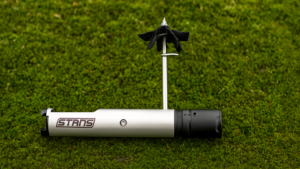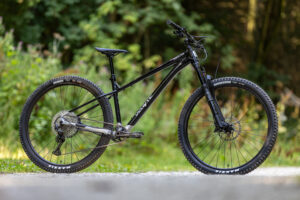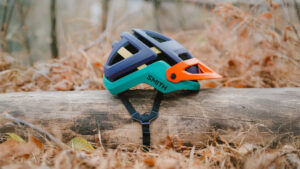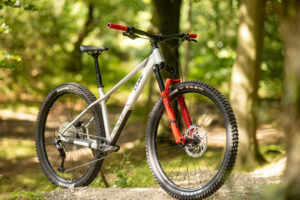The Scottish brand is well known for high-pivot warriors, but the Kurgan is Deviate's first e-bike, and an absolute beast in many ways.
Deviate’s first e-bike is a none-too-subtle high-pivot marauder, and the Kurgan boasts some clever features that further separate it from the hordes
Deviate Cycles has built a loyal fan base from its home in the heart of Scotland, centred around a small range of high-pivot idler bikes. The launch of its first e-bike – the Kurgan – is a big deal for the brand, and a project with a long tail, that has developed and evolved over six years. So what has this extended gestation period delivered?
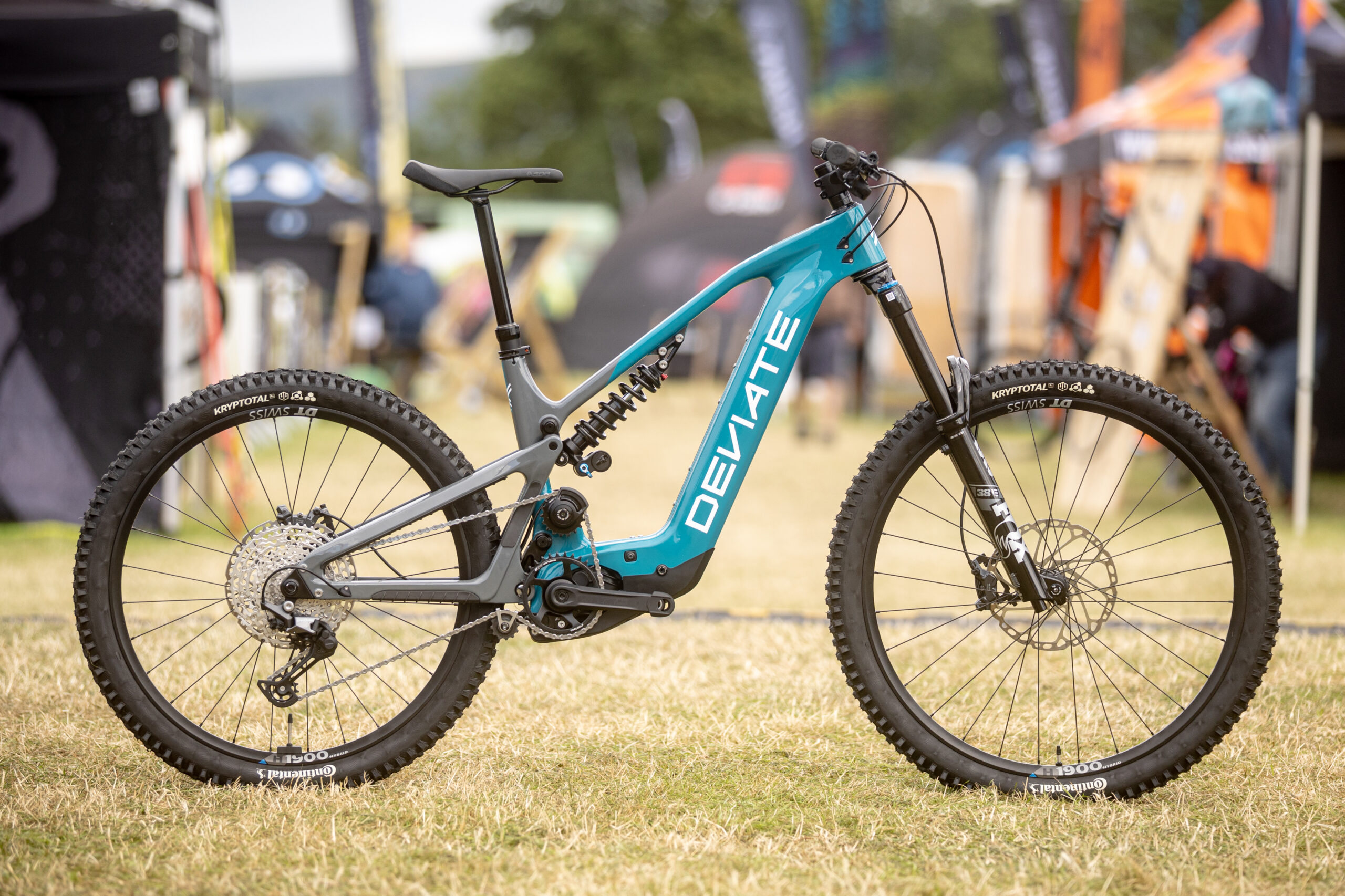
Deviate’s Kurgan is a mullet-wheeled 165mm high-pivot e-bike that sets you back £8k in this Fox Performance Elite guise
Deviate Kurgan need to know
- Deviate’s first e-bike is Bosch CX powered
- Bosch Performance CX motor has 750W and 100Nm with 400% support
- 800Wh internal battery is removable
- 180mm travel fork with 165mm at the rear
- MX wheels on all three frame sizes
- Bosch Kiox 400C colour display sits in the top tube
- Full carbon frame and high-pivot idler suspension design
- Space for a Bosch 250Wh range extender and a water bottle
- Weight for Elite model 25.25kg
- Two models – Factory and Elite – at £9,999 and £7,999 respectively
- Availability December 2025
For the most part, Deviate has sensibly stayed well within its lane for the Kurgan, sticking to a high-pivot idler design and burly 180/165mm travel, safely paired with one of the best motors on the market – Bosch’s latest Performance CX – and a big 800Wh internal battery. But it has also stepped out of its comfort zone with a completely new twin-link suspension layout – both the Claymore and Highlander use single-pivot designs.
The Kurgan is available in two builds, with the range-topping Factory version coming with Fox Factory suspension and Shimano XT/XTR wireless Di2 drivetrain for just shy of £10k. For this test Deviate lent me the marginally less fancy Elite model with Performance Elite level suspension and Shimano Deore/XT build priced at £7,999. I rode the bike for a day on Innerleithen’s fabulous Golfie trails – shout out to the Tweed Valley Trail Association for building and maintaining this superb network – as well as at home in the Surrey Hills to see how it stacks up against the best e-bikes on sale.
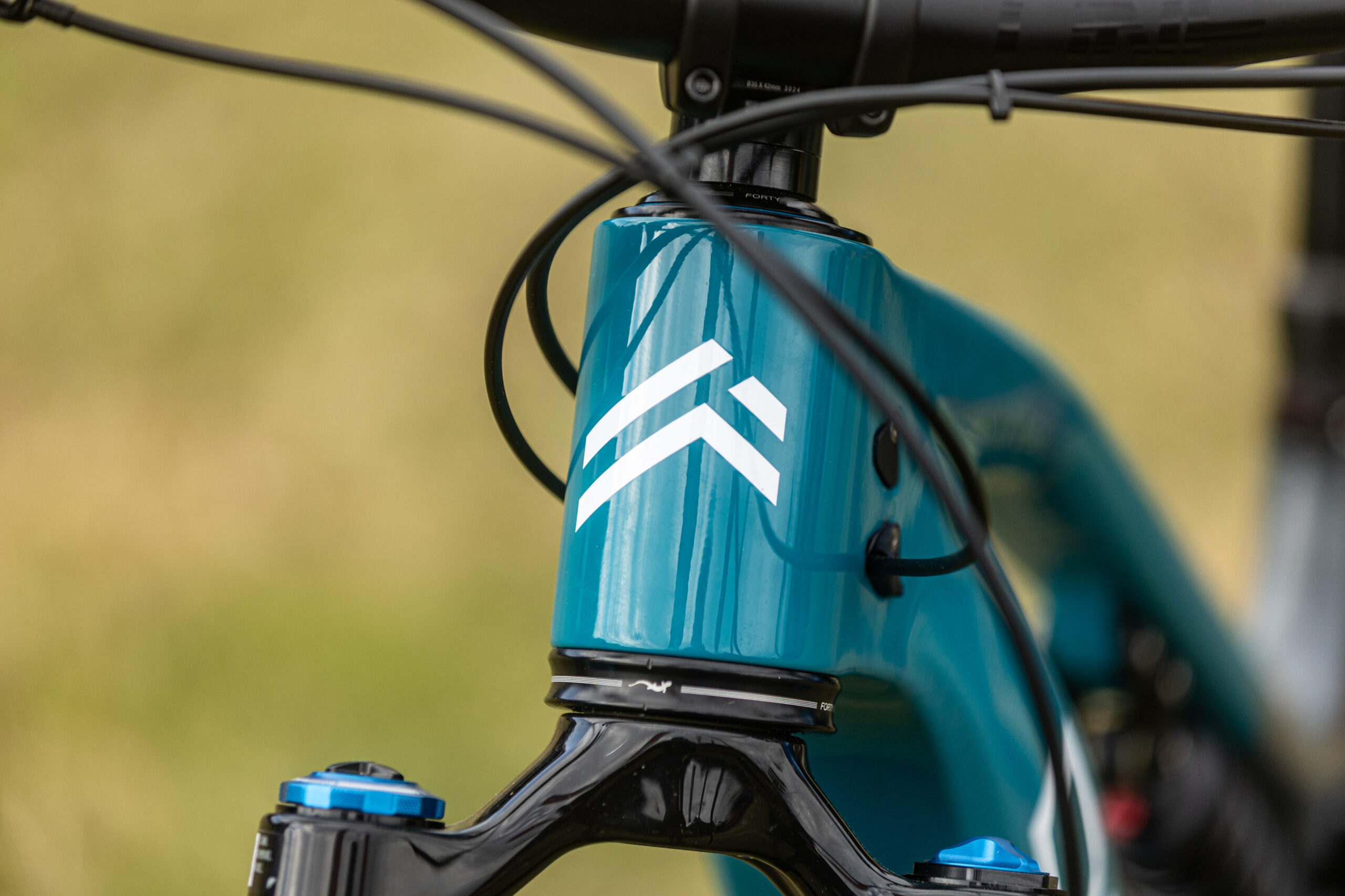
Individual cable ports and a reach adjust headset show Deviate has thought about function and longterm ownership.
Frame
Deviate’s full carbon frame cuts a distinctive profile thanks to a pronounced S-bend down tube and hunched top tube. Throw in the high-pivot idler and twin-link suspension and there’s a lot for the eyes to take in. If I’m being honest, I wouldn’t consider it a beautiful design, but it’s certainly striking.

The idler is designed to reduce chain growth, while the lower roller is there to increase chain wrap around the chainring.
There are reasons for the exaggerated curves though. The fully enclosed down tube makes abrupt kinks to allow the battery to be slid out the bottom, and the top tube arcs upwards to create enough space for a water bottle and Bosch PowerMore 250Wh range extender to be run simultaneously.
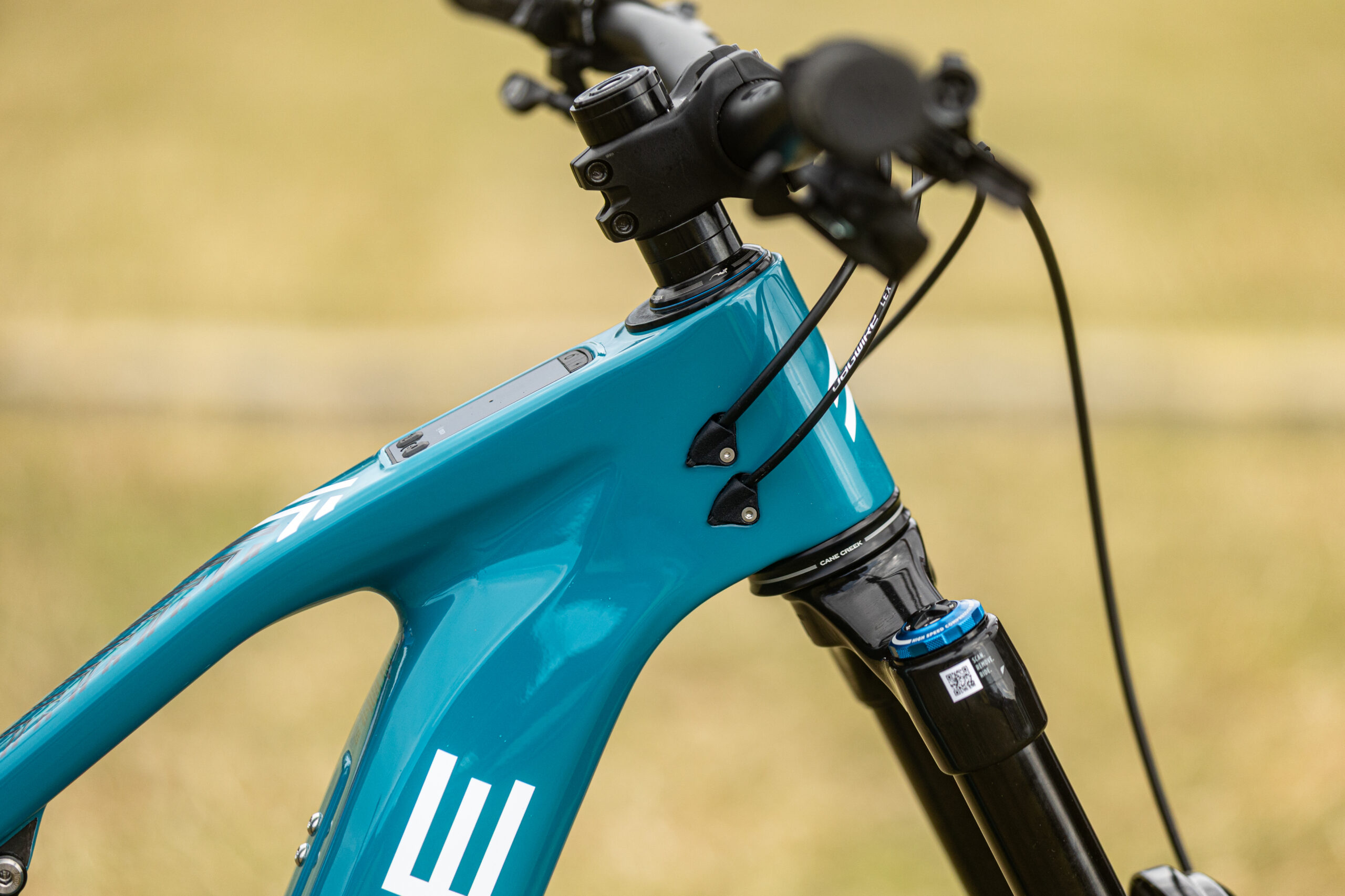
Clean cable routing and Bosch’s new Kiox 400C screen nestled in the top tube.
Cables run through the frame along guide clips and enter the side of the head tube via separate ports with clamps to prevent rattle. Moulded rubber protection swathes the driveside stays to damp chain rattle, and there’s a huge battery door/sump guard at the base of the down tube.
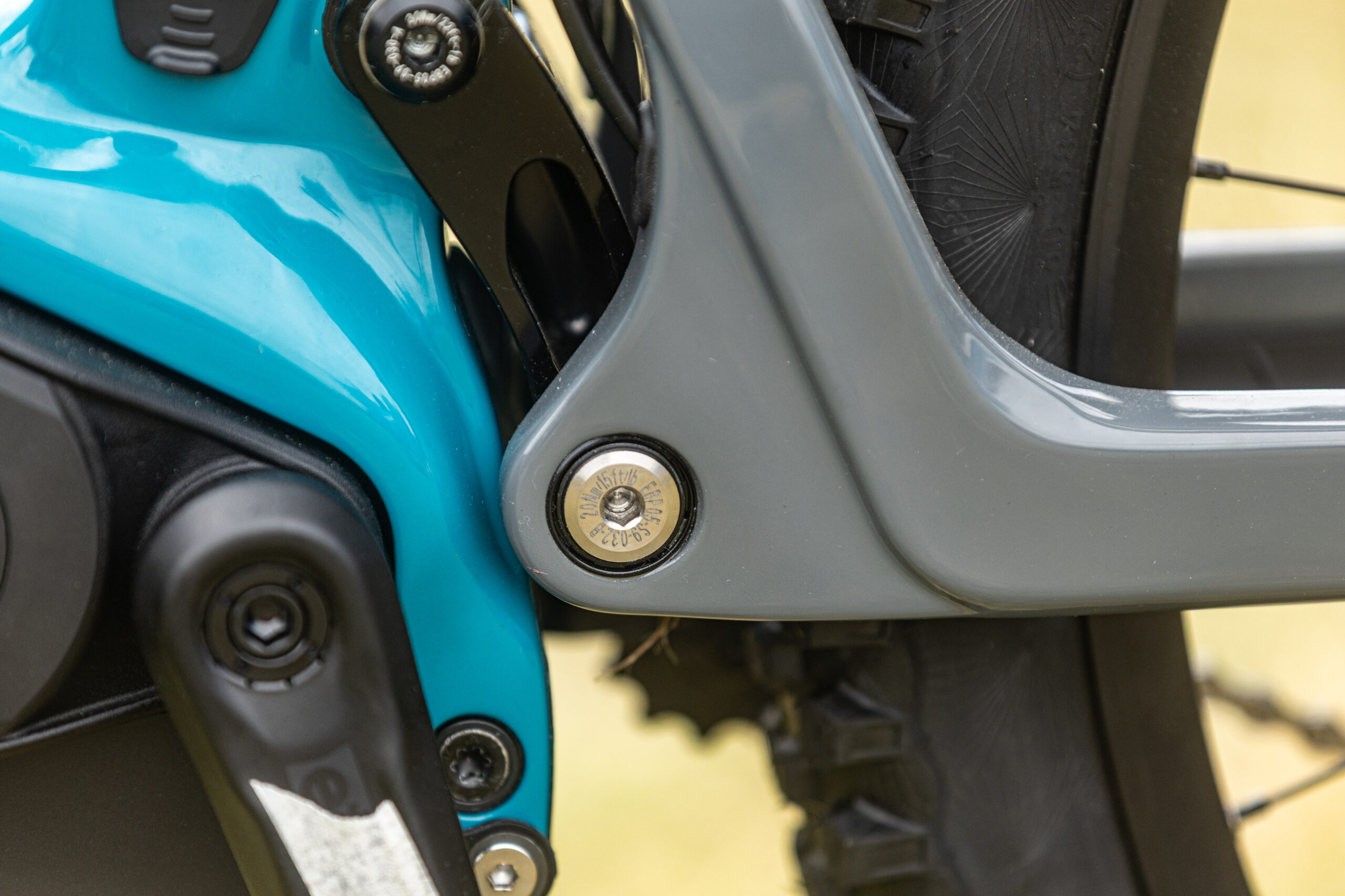
The centre of the pivot bolts incorporates a grease port for injecting fresh grease.
Given the harsh Scottish winters this bike has been developed in, it’s great to see a full complement of Enduro Max bearings as well as an integrated grease injection system that works best with regular top-ups of fresh grease, rather than comprehensive and infrequent purges.
On the other hand, the complex twin-link arrangement leaves a lot of awkward nooks and crannies that makes thorough cleaning a time-consuming process.
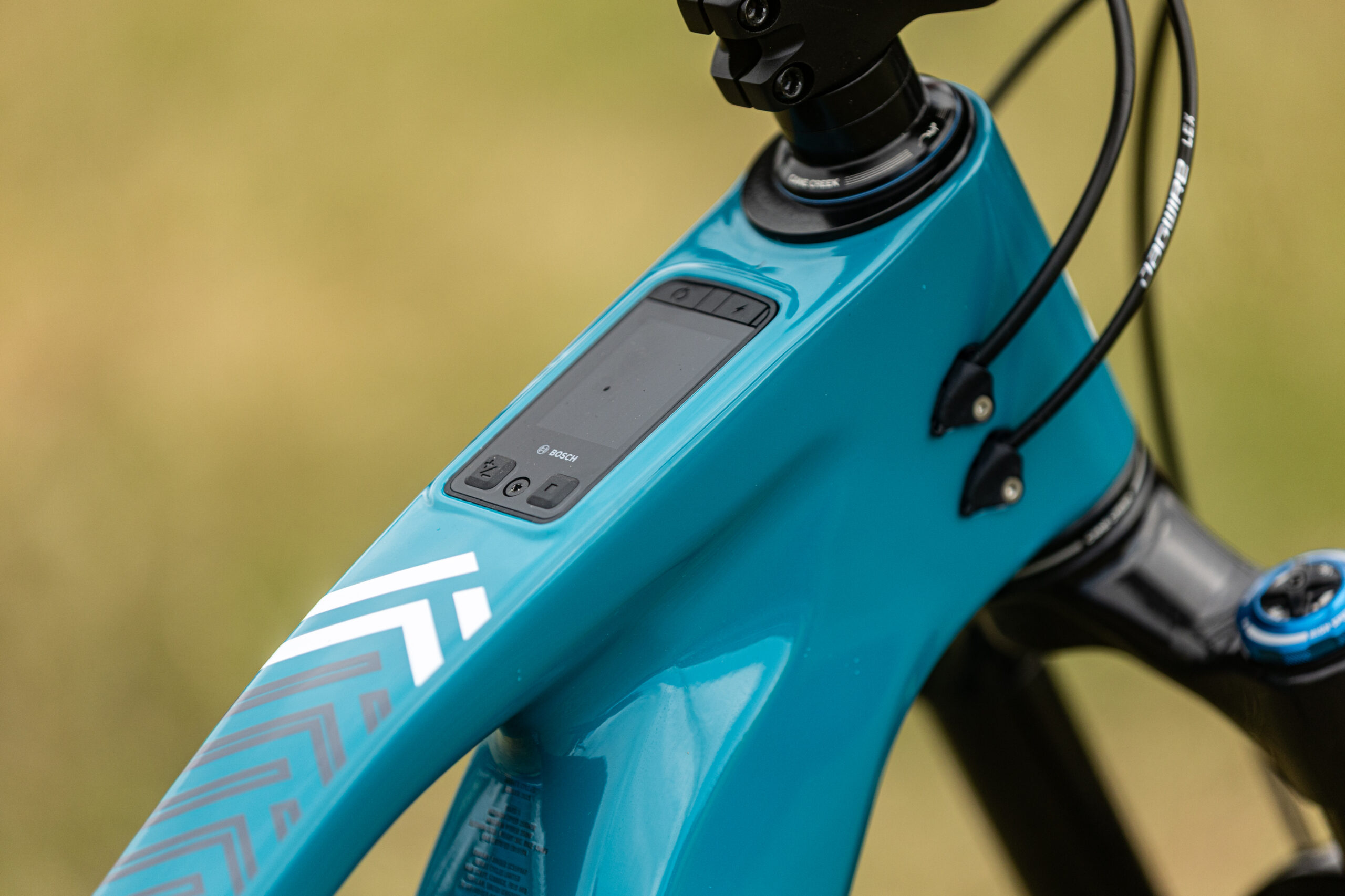
That Bosch screen can be configured to display a myriad of data, and there’s even a USB-C charging port.
Sizing and geometry
Deviate offers the Kurgan in only three frame sizes, which limits your options compared to the four or five offered by most bigger brands. And it’s the smaller end of the scale that gets sidelined, with the range starting at medium through to XL. However, Deviate does offer adjustable reach with press-in offset cups, so there is a healthy amount of customisation possible to really dial-in your sizing. At its shortest, the reach starts at 455mm, while the XL with the +5mm cup tops out at 510mm. Seat tube lengths are 410mm, 430mm, and 450mm respectively and there’s lots of dropper insertion depth.
I rode the size L with the +5mm cup, giving a quoted 485mm reach – pretty roomy for a full fat e-bike. But given that the rear centre is 445mm with 29mm of growth at full travel, and around 15mm at sag, I think going long gives a better balance between the axles.

The Kurgan uses different rear centre measurements across the three frame sizes,
There are actually three unique rear centre measurements, with the Medium running 441mm and the XL extending to 450mm. Which also means the XL will have more rear wheel travel than the M and L.
Deviate quotes the head angle at 63.5º with the 180mm fork, while the seat tube angle is 78º. A 340mm claimed BB height rounds out the numbers. My measurements for the Kurgan did differ from the published figures, with my test bike having a 480mm reach, 450mm static chainstay length, and 349mm BB height. Actual rear travel is pretty close to claimed at 162mm.
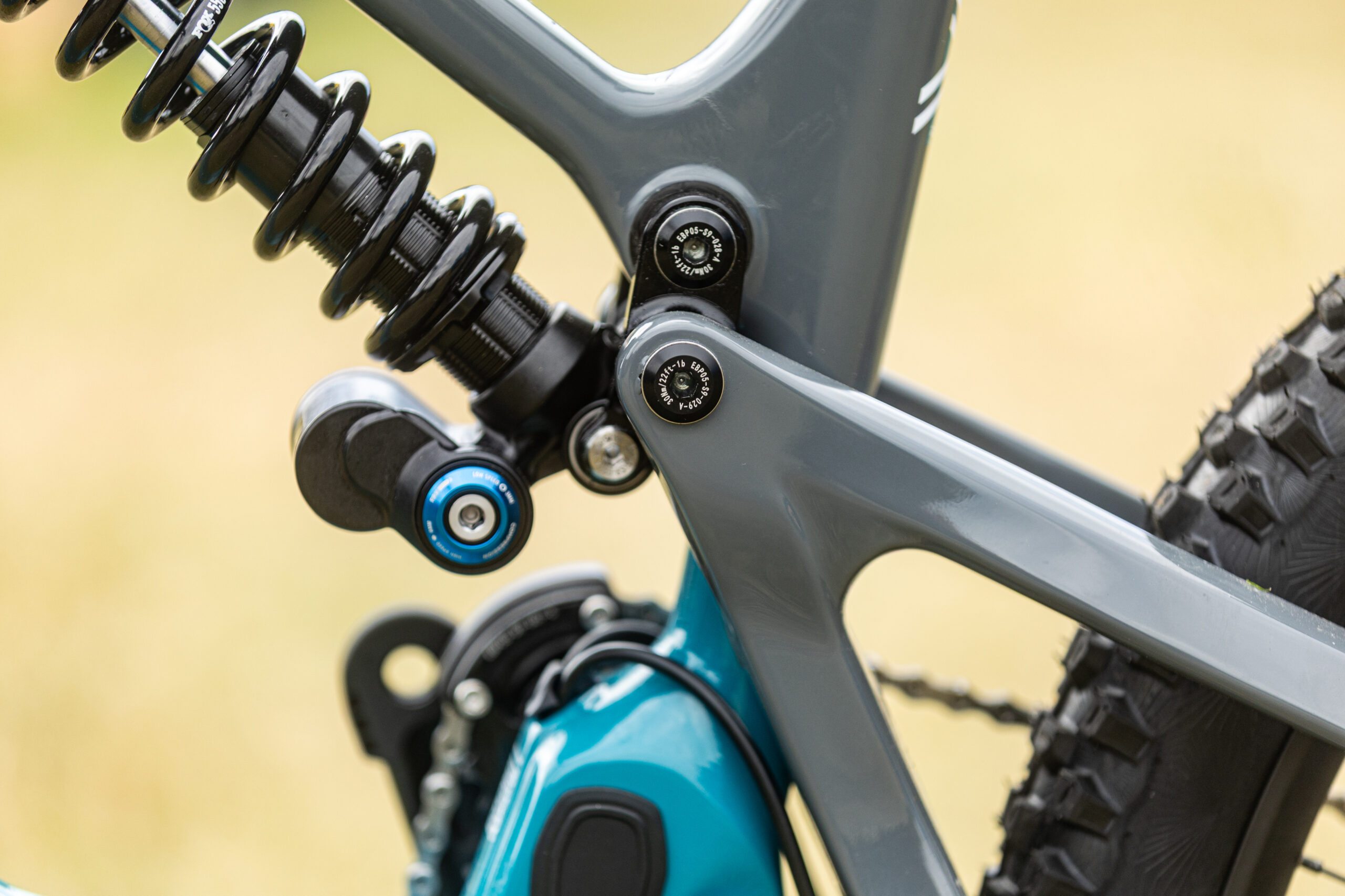
Look closely inside the pivot bolts and you can see the integrated grease ports.
Suspension
While Deviate has always gone for a high-pivot idler arrangement on its bikes, the Kurgan is the first twin-link design. The links are counter-rotating, like a traditional VPP design, where the lower link mostly dictates the axle path and the upper link controls the leverage rate.
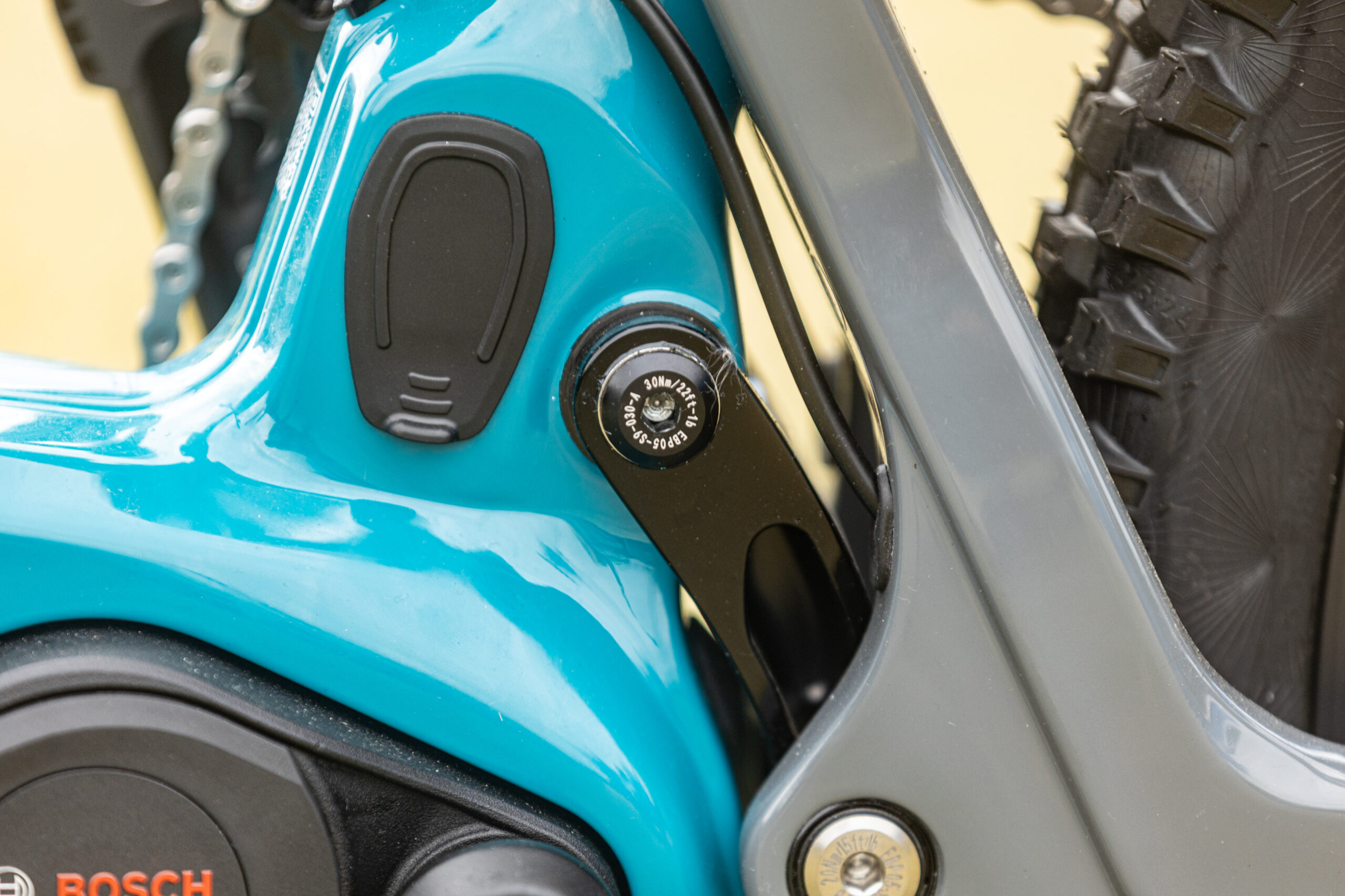
Bosch’s standard flappy rubber charging port cover doesn’t make a great seal and feels flimsy.
As previously mentioned, the axle path is entirely rearward, although it is more vertical for the last 10-15mm of travel. The leverage ratio starts fairly high for a supple top end, and actually increases for the first 25mm, then falls away to bottom out with around 26% progression.
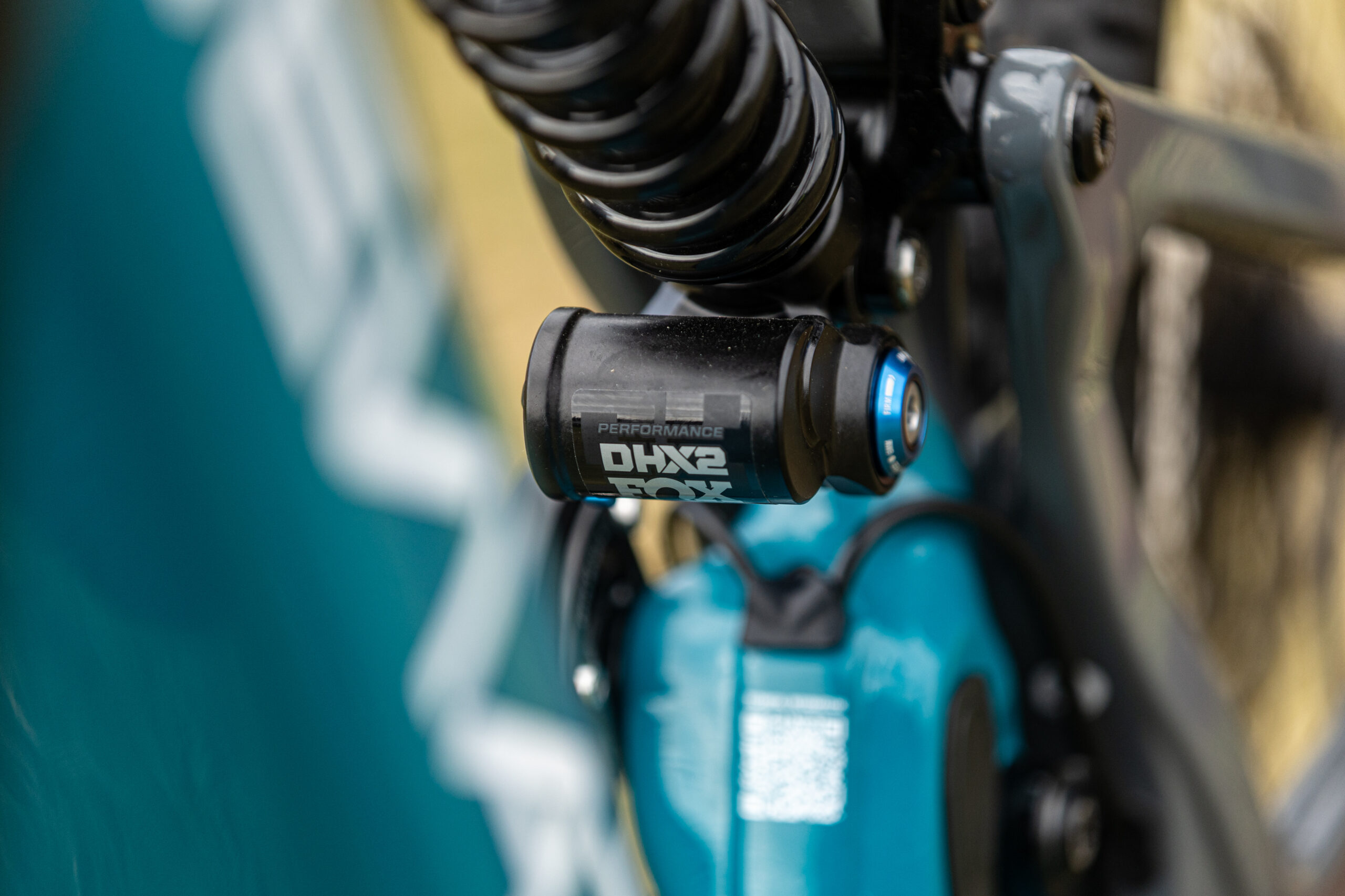
Both Kurgan models come with coil shocks as standard.
Both Kurgan models come with coil shocks. On the Elite model it’s a Fox Performance Elite shock with high/low compression damping and low-speed rebound damping adjustment. The stock 600lb spring gave me 20mm sag, or 33% of total shock stroke.
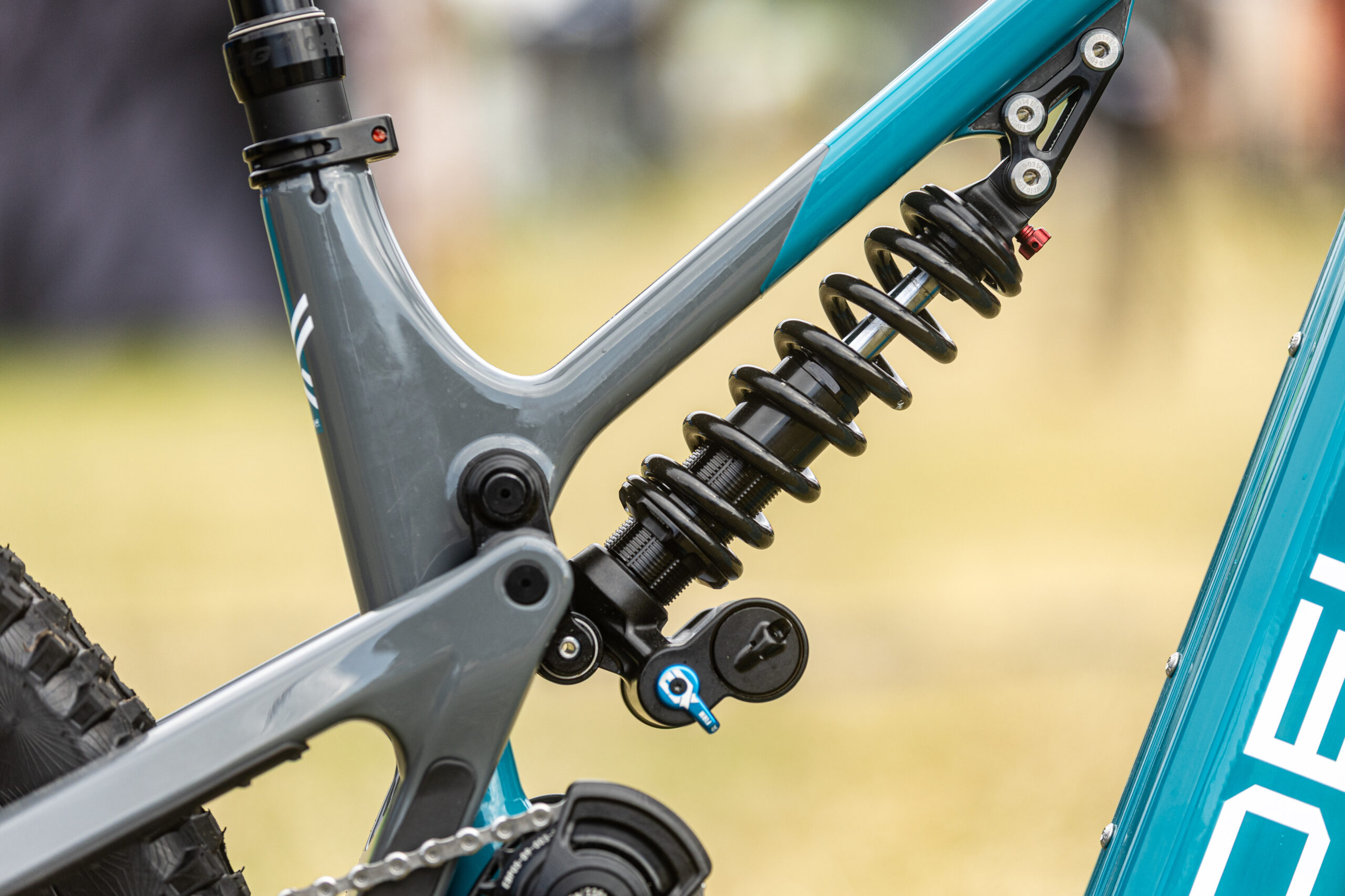
I ran the damping almost wide-open on the Fox DHX2 shock.
Anti-squat, at least in the climbing gears, is pretty high, at over 118% throughout the travel. At the other end of the block it’s also above 100% for most of the travel. Anti-rise is also fairly high, indicating that geometry will be quite stable under braking, but not as active as some designs.

Deviate has chosen stubby 155mm E*Thirteen cranks.
A Performance Elite 38 fork graces the front end, with an ample 180mm of travel and high/low damping adjustments for both compression and rebound.
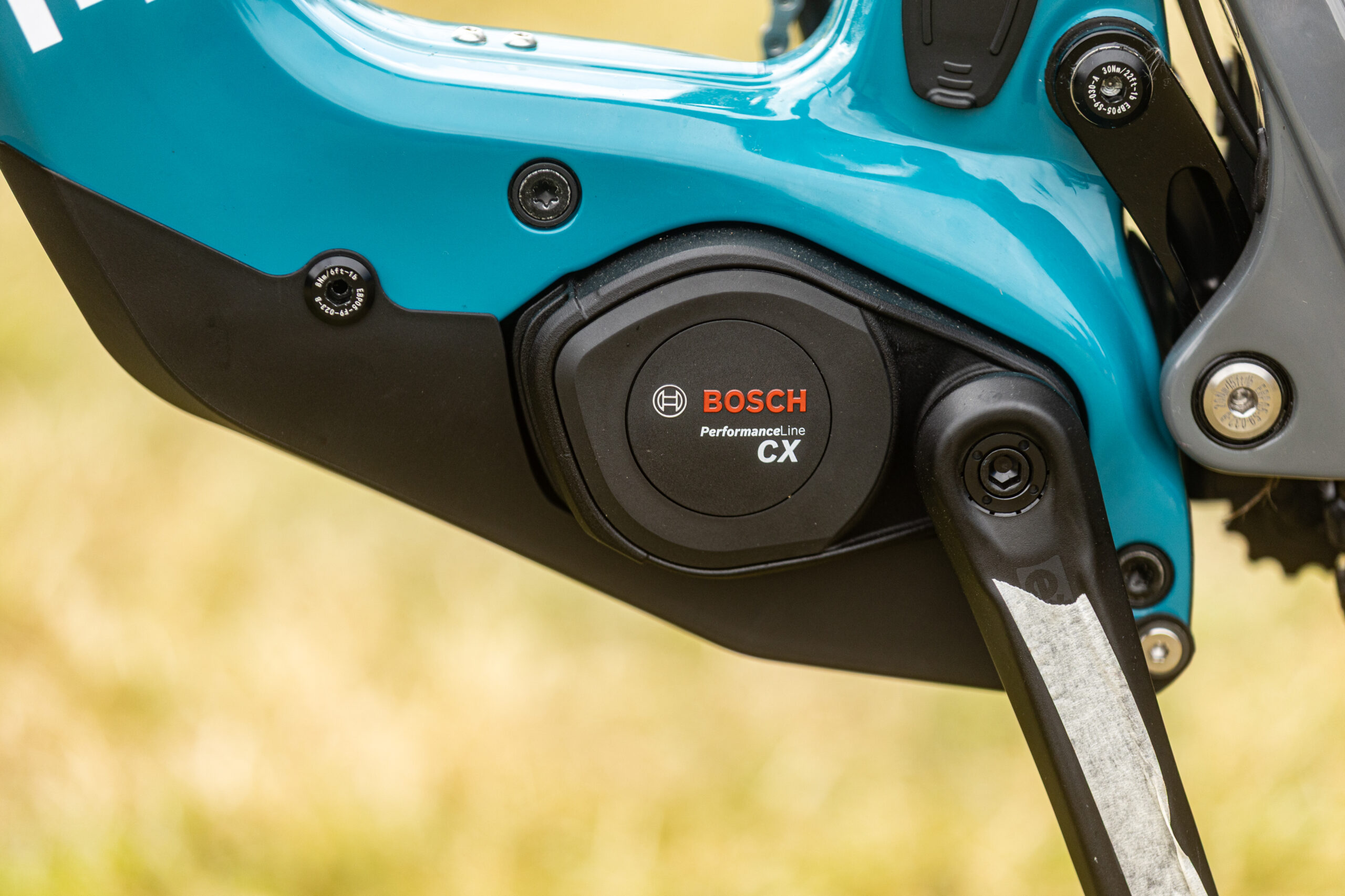
The Bosch CX drive system is not as light or compact as DJI’s Avinox but it’s a safe bet for a small brand like Deviate, and the ride performance is excellent.
Motor and battery
The Kurgan is fitted with the popular Bosch Performance CX gen 5 motor, pumping out 750W peak power and 100Nm peak torque thanks to its recent power upgrade. It also gives up to 400% support, so it makes light work of both chunky moorland paths and endless fireroad climbs. A new eMTB+ mode adds extra sensitivity to the motor reaction, giving maximum overrun with just a quick tap on the pedals.

The bolt holding the sump guard also secures the battery. The sump guard just hinges out of the way.
Integrated into the top tube is the new Kiox 400C colour display, giving a feast of data that (in eMTB mode) changes depending on the pitch of the bike. You can control the display, and the motor, with the included wireless Mini Remote, or you can reduce clutter and run things entirely via the Kiox unit.
Going for the larger 800Wh Bosch PowerTube battery is a smart move for big days in the saddle, especially given the recent power upgrade. As a guide, our range test using the Whyte Kado RSX and Turbo mode netted 1,600m of climbing. The Kurgan may not quite hit that mark given that the idler design will rob some efficiency, and it’s a heavier bike, but I still managed 1,200m of climbing at Golfie in a storm and had 30% left at the end of the day.
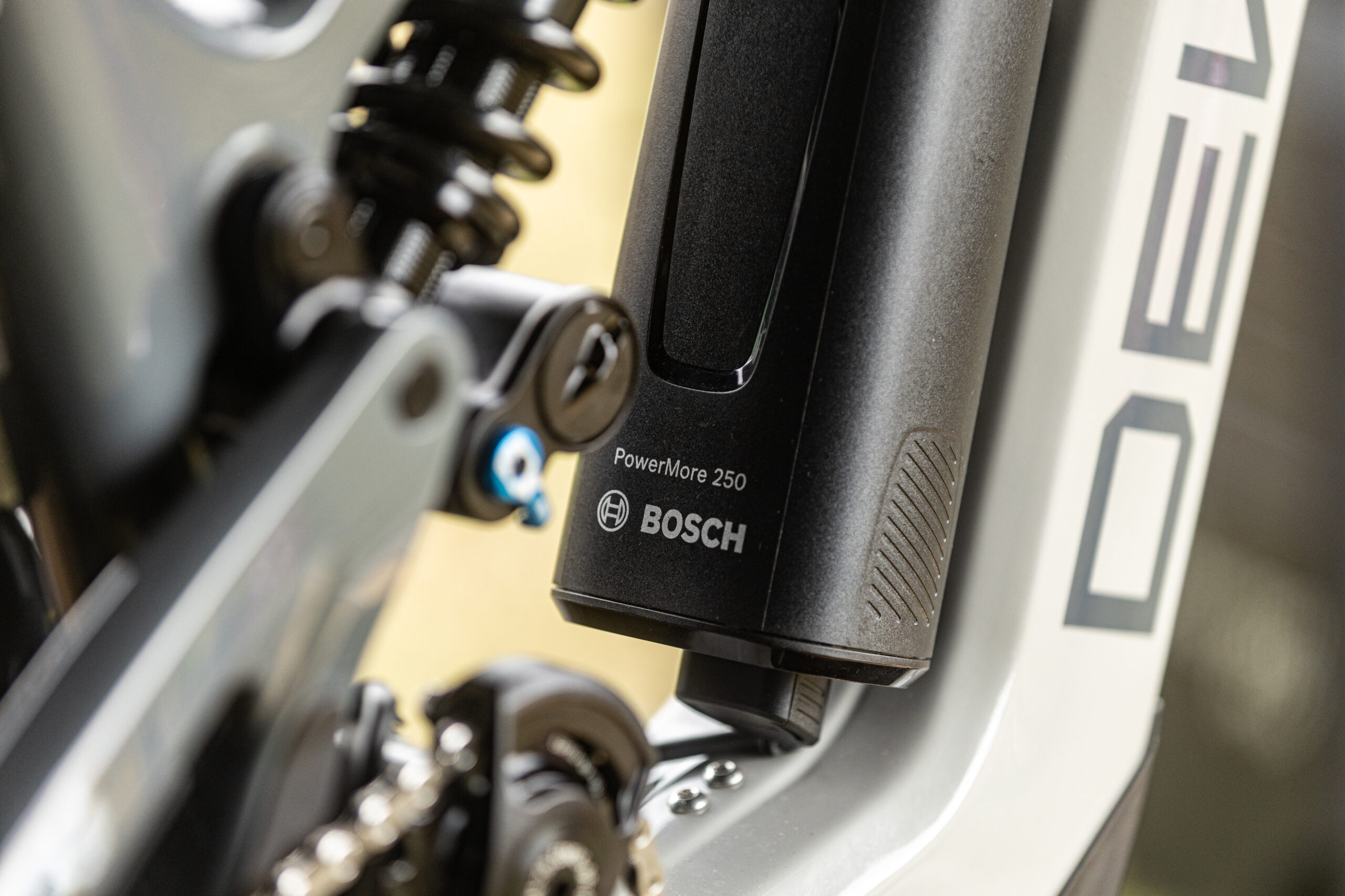
No need to chose between staying hydrated or keeping the lights on – there’s room for both.
There’s also the option to add the PowerMore 250Wh range extender, or even slide a second battery in, for really big days in the saddle. However, I’d really like to see Bosch release a fast charger, giving the option to top up to 80% while having a rest and enjoying some lunch.
Deviate has done a great job on the removable battery design. With the bike upside down, remove two 6mm hex bolts from the side of the down tube – they hold the battery and the motor cover in place. Swing the motor cover towards the back wheel out of the way. Release the safety catch and withdraw the battery with the attached carry handle. It’s simple and it feels robust, yet it takes about 30 seconds to do. Nice job Deviate!
Components
This is my first time on the new Shimano brakes and drivetrain, and to be honest it was hard to notice much difference. The new Deore drivetrain has a typical metallic clang when banging in the shifts under load, but the shifters are ergonomic, fall easily to hand when needed, and have a light yet positive action.
Shimano’s new Deore XT M8200 brake levers have a noticeable breakaway resistance, but once moving there’s a light action. Huge 220mm rotors help rein in the Kurgan’s 25kg weight.
Thick Peaty’s Monarch grips wrap around an alloy OneUp handlebar, and seating arrangements are handled by a SDG Bel Air 3.0 V3 saddle and Tellis V2 dropper. This is a reliable unit with easily accessible hex keys for adjusting the saddle tilt.
Deviate has fitted stubby 155mm E*Thirteen cranks, which seems a little cautious given the lofty 349mm BB height. Although the long wheelbase helps to mask the feeling of being too perched, I think Deviate could have dropped the BB height at least 5mm without clearance issues.
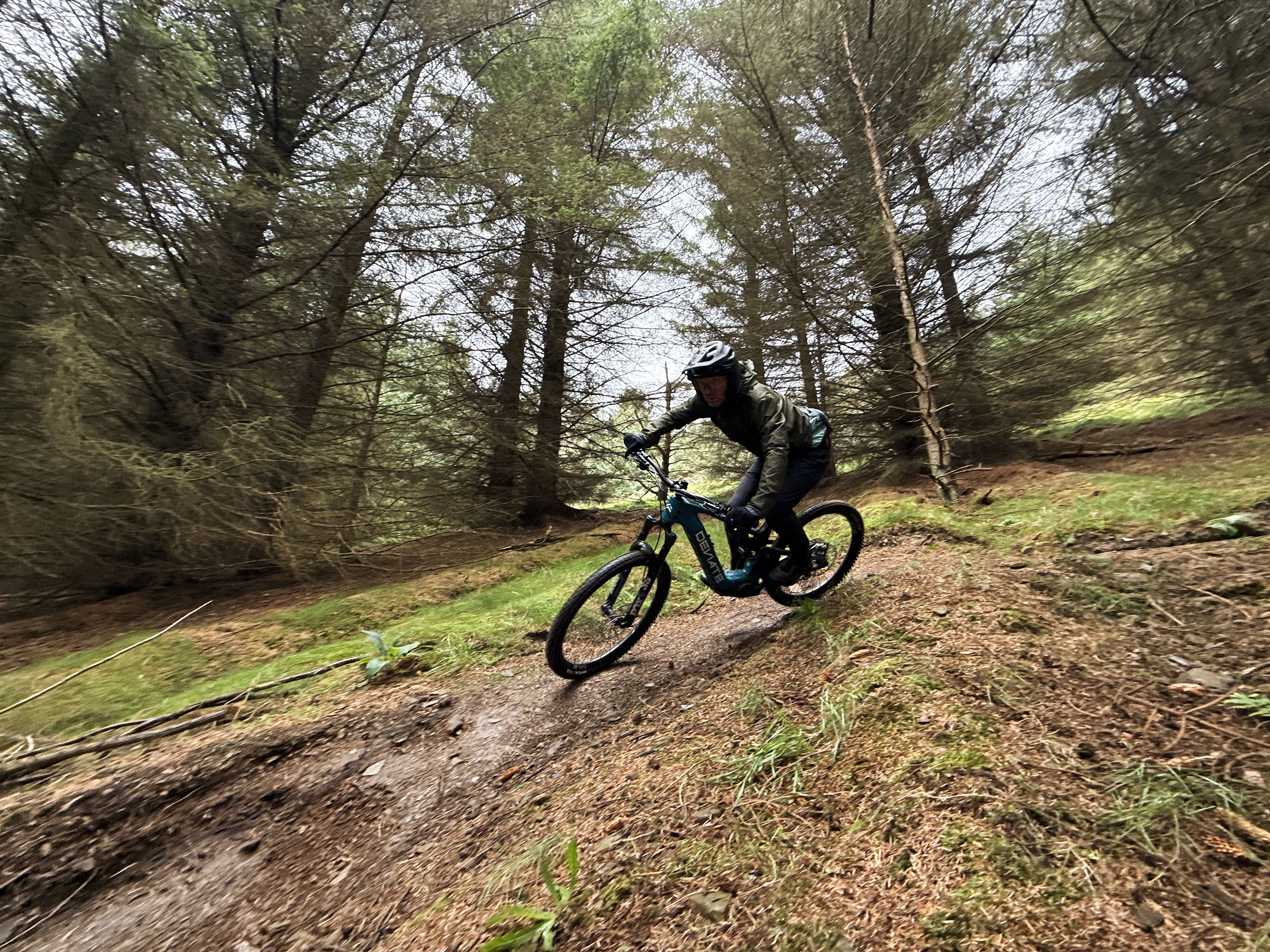
Storm Flori tried to stop play, but we soldiered on and got some good ride time on the Kurgan around Golfie.
Performance
Don’t fall into the trap of thinking all high-pivvot bikes ride alike – they don’t. A Trek Slash+, for example, feels familiar and much more like a low-pivot bike than something like the Kurgan, and not just because the Trek has half the power. Deviate has made the Kurgan a fully fledged high-pivot bike, which makes commercial sense, as this is why people are drawn to the brand in the first place. It’s a bike that unapologetically doubles down on high-pivot traits, warts and all.

Loads of power, a steep seat angle, and long chainstays mean the Kurgan monsters most slopes.
Climbing
With a very steep seat angle, long chainstays, a powerful and controllable motor, and decent traction from the suspension, the Kurgan is an effective and accomplished winch. As befits the intended use, the upright riding position works best on rides with back-to-back climbing and descending, rather than those covering ground with lots of flat sections.
There’s some noise from the idler pulleys in the climbing gears, but it’s not too loud and it’s hard to detect any meaningful extra drag. Even if my test bike did have a pre-production lower tensioner.
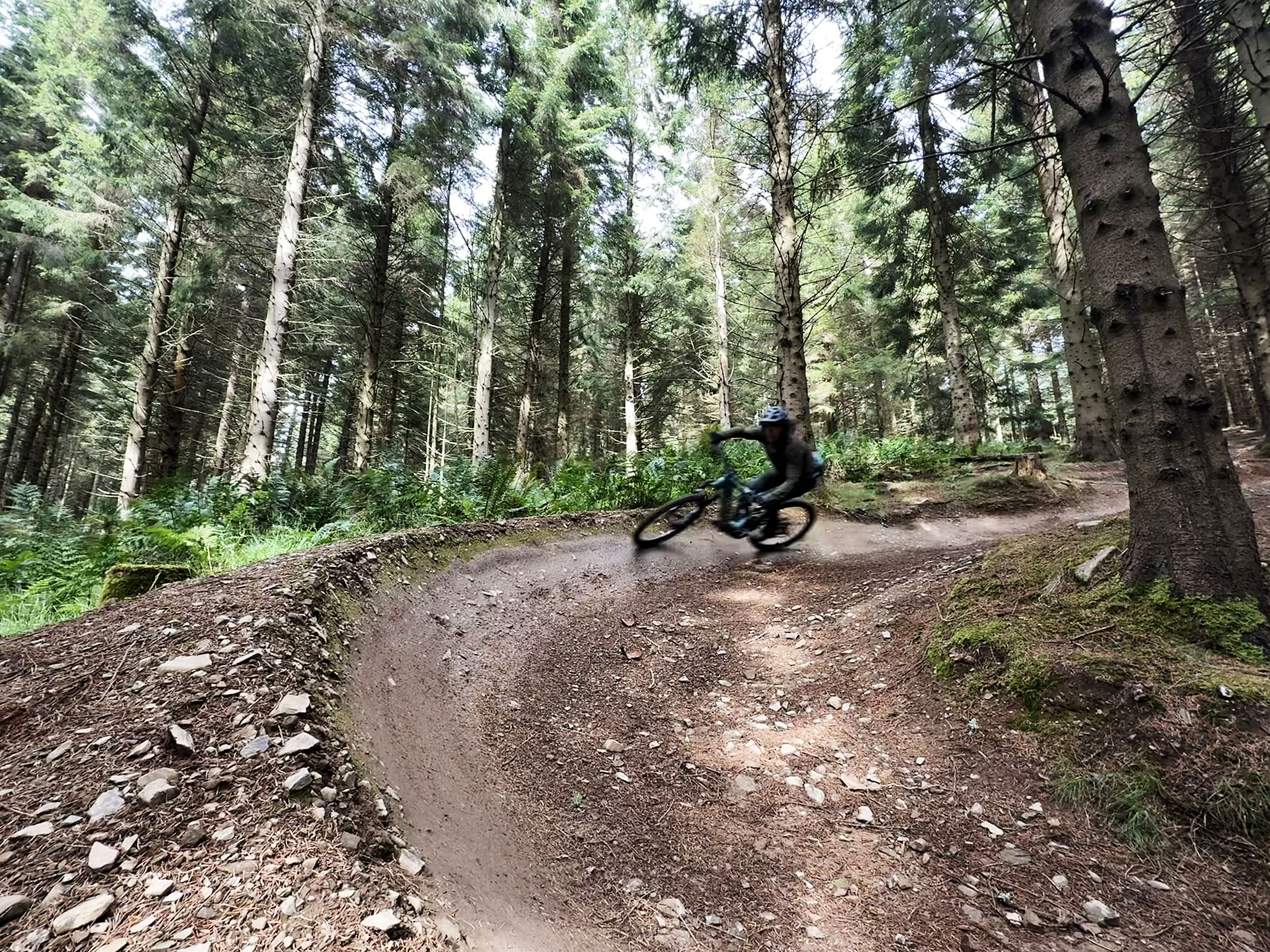
The sun actually came out at one point!
Descending
At slow speeds – and this is typical of all true high-pivot designs that I’ve ridden – the Kurgan is glued to the deck. Bunny-hopping obstacles is stymied by the chainstay growth, which moves my centre of mass forward every time I try to get the front wheel off the ground. Then there’s the massive 4kg Bosch battery sitting further forward than it might on an e-bike without a removable battery. Throw in the Deviate’s sheer weight and length and it’s really not a bike that motivates nonsense like jibbing. Even lifting it over fences and stiles is exhausting.
Get up to trail speed and there’s more to push against and the bike starts to give back and come alive. I wouldn’t call it playful, but it feels less inert. It does love to pop out of bucket turns, and feels phenomenally stable through long, sweeping corners. The overall length is certainly confidence inspiring, but I couldn’t help feeling like I would be even more in-tune with the bike with a lower BB.
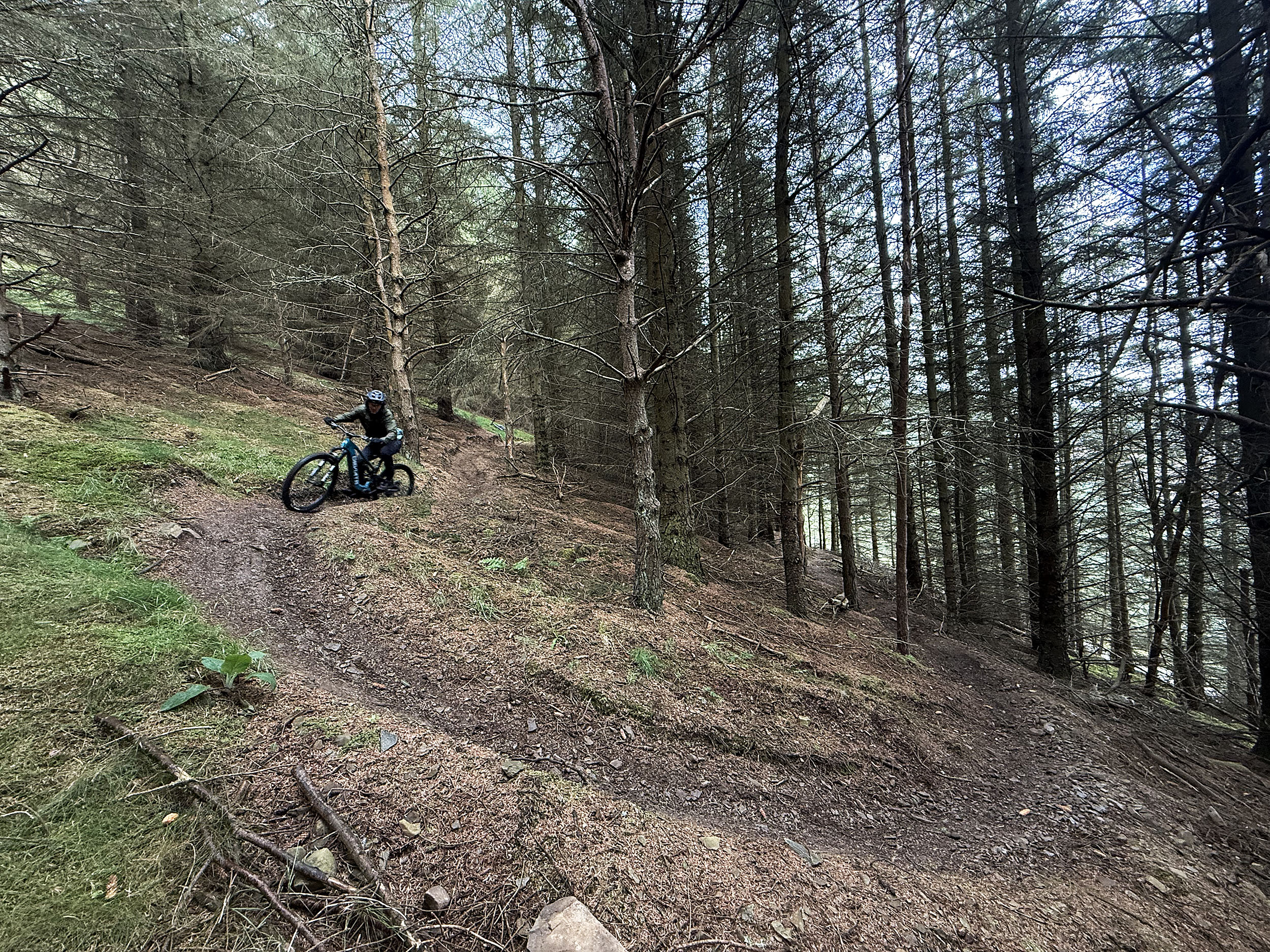
The Kurgan settles into long, sweeping corners with absolute composure.
I expected the extensive travel and rearward axle path to feel sumptuous on big hits, but the Kurgan seemed to choke up on flat drops and sharp, square-edge bumps. At first I thought it might be chain growth as there’s quite a bit of anti-squat deep in the travel, but cycling the suspension reveals very little. The DHX shock seems to be running a firm compression tune which, in combination with the leverage curve, could be creating a platform effect channelling harshness through my feet.
Verdict
It’s not my personal cup of tea, but I believe Deviate has made the right call with the Kurgan. It’s a solid bike that's designed to be tough enough to cope with the Scottish climate. The brand has made a success of selling high-pivot bikes, and the Kurgan doubles down on that USP. It’s loaded with practical features – like the removable battery, the grease-port lubrication system, and space for a range extender and water bottle – which also shows Deviate has listened to what its customers want. So while I’d prefer a lighter, more agile e-bike, I think the Kurgan is a great match for current Deviate followers looking to power up their riding.










